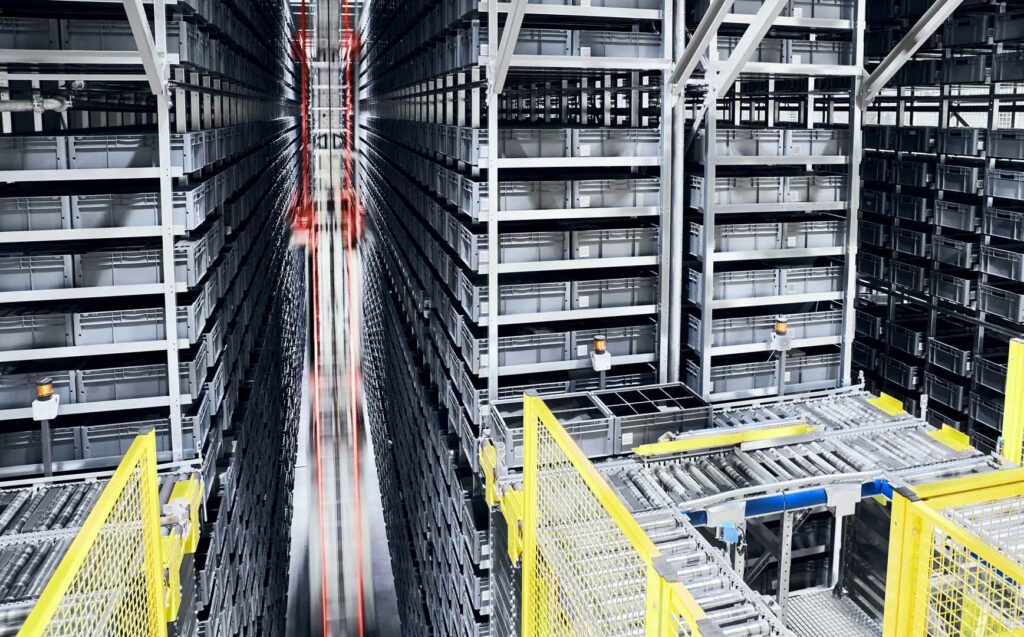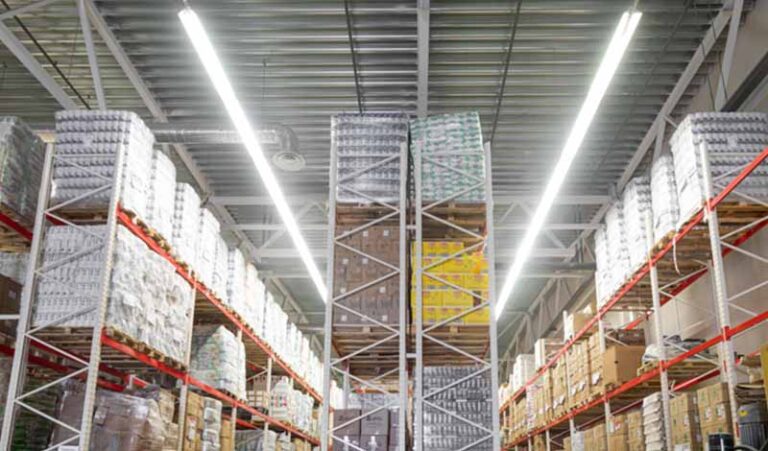
The modern warehouse is a complex environment. Sitting at the heart of the supply chain, warehouses need to be managed and monitored with high levels of accuracy and efficiency. Any failures within a warehouse’s operations can increase costs and bring the supply chain grinding to a halt. This is why warehouse management system software is so important.
But what is a warehouse inventory management system exactly? How does this kind of software system benefit your business? Read on to discover more.
At PEC, we deliver enterprise-level warehouse management system software designed according to the specific needs of our clients. To achieve this customized service, we begin each project with an in-depth consultation, where we can learn more about your requirements. Get in touch with our team if you have any questions about what we provide, or schedule your consultation today.
A warehouse management system, or WMS, is a collection of software pieces and digital technologies designed to make warehouse operations much more simple and straightforward. These pieces of software are integrated into a central platform, streamlining the management process by ensuring that all the different components can communicate and share data with one another.
WMS solutions include inventory management systems that help your teams keep track of data from across the environment. Inventory levels are monitored in real-time, and inventory tracking tools help you to optimize storage and minimize shrinkage. These solutions also offer cloud-based controls and interfaces so that remote teams can use the WMS securely and reliably.
Warehouse management system software products aim to bring warehousing up to date for the Information Age. Data-driven processes provide the basis for industries of all types and in all sectors, and warehousing is no exception. A warehouse inventory management system allows users to leverage this data and gain a competitive advantage.

Utilizing a warehouse management system is the key to unlocking efficiency gains for many businesses. There are numerous advantages in third-party logistics, labor management, and sales order visibility that are achieved through the speed and accuracy of automation.
Additionally, systems can be tailored to the unique operations for better insights into performance metrics. With serial number and barcode scanning capability, users can easily manage goods delivery and tracking activity with minimal manual effort. Overall, it provides an efficient way to never miss deadlines while keeping track of essential stock levels.
Let’s look at what you can expect when you deploy the right WMS solution.
1
Warehouse management software helps you to understand your inventory levels in real-time. With a software solution on your side, your teams can scan inventory items into and out of the warehouse, recording item statuses and other information as they go. If items are sold, damaged, lost, or replenished — or if there are any other status changes — this can be recorded in the system. This ensures managers have a clear picture of what they are currently working on within the warehouse.
Of course, relying upon manual scanning and data management is not usually enough. These manual processes need to be backed up by automated inventory management features that analyze inventory levels on an up-to-the-minute basis. Warehouse management software solutions combine manual and automatic scanning hardware inputs, drawing data from both to provide an accurate picture of the warehouse at any given moment.
As uncertainty is eliminated from the equation, it becomes much easier to run the warehouse effectively. Teams can rely upon the data sets they are working with, and they are assured that this data reflects the very latest changes to inventory levels.
2
Inventory control becomes much easier with warehouse management software. Teams can do much more than look at a snapshot of inventory levels — they can act upon this data in a positive and timely fashion.
The WMS provides tools that enable users to execute actions on the system, placing orders and flagging queries as they arise. In this sense, the solution becomes a valuable asset in the ongoing day-to-day operations of the warehouse – or multiple warehouses.
Teams can schedule the execution of key warehouse processes or set automated tools that support effective operation. For instance, if the level of a specific stocked item falls too low, the system can automatically re-order this item. Pick, pack, and ship functions can also be scheduled or governed by automated functionality.
Where required, users can complete ad hoc actions too. These additional actions are completed without delay, allowing changes to be made on the fly. This enables teams to get the best out of automated warehouse management without losing that all-important manual control.
3
Businesses of all kinds — and in all sectors — are not designed to remain static. Instead, they are designed to grow and change, exploring new avenues and capitalizing on opportunities as they arise. With WMS solutions in place, you’ll achieve effective inventory management in the long term, keeping up with demand as it changes over time.
All of this must be built upon data — and the WMS solution provides this data. The software provides accurate and reliable reporting and forecasting functionality. This is an intrinsic part of future planning, as it gives teams valuable insight into future demand and scaling requirements.
Businesses cannot afford to be caught unawares by spikes or dips in demand. Instead, they must stay ahead of the curve, planning for these changes in advance. This is one of the primary benefits of a high-quality WMS solution.
4
A delay in the supply chain has a knock-on effect that can reach right across the industry. If there is a shortfall in delivery or orders are placed late, this can cause issues for your partners. When these issues stack up over time, partner relationships begin to suffer.
Warehouse management systems help to support better relationships between you and your partners. Order management tools ensure that these orders are placed promptly, while inventory tracking helps to guarantee that deliveries are made on time and in full.
Partners prefer to work with entities that can be relied upon to meet deadlines and guarantee a certain level of service. Warehouse management systems play a big part in making this happen. Your partners will undoubtedly thank you for this approach.
5
Cloud-based WMS software solutions offer the opportunity to achieve effective digital transformation. This digital transformation is necessary for businesses in the Information Age, which need to leverage data and intelligent processes as they optimize their operations.
Many businesses struggle to know where to begin with this optimization using ERP systems. This is where a warehouse management solution can help. WMS solutions digitize the management process for the warehouse, bringing together a range of automated and machine learning-enabled tools to assist with operations. Meanwhile, the cloud-based element ensures data is accessible securely from remote locations.
The platform integrates with other solutions, such as customer relationship management software, and enterprise resource planning solutions, to create a comprehensive digital ecosystem. The result is a far more flexible and agile set of processes. Many business owners find this the perfect foundation for genuine digital transformation.
6
Warehouse management software gives employees the right experience as they complete their daily tasks. Your human personnel are better suited to critical thinking tasks and innovation. They are less well suited to manual data entry and system management tasks. WMS solutions mean they can spend more time on the former and less on the latter.
A warehouse management system supports team members in the right way, deploying automated tools and processes that handle repetitive data management tasks. This frees up human teams to focus on the business’s more engaging and creative aspects. In turn, this dramatically increases workplace morale and job satisfaction.
Morale and satisfaction are crucial elements within any business. These factors help firms retain their best-performing employees and staff members, maintaining a competitive advantage over other companies in the same market.
7
The optimal warehouse is a warehouse in which costs are manageable and sustainable. Businesses cannot afford to let costs spiral out of control, but at the same time, they cannot compromise on operational efficiency and effectiveness. Cost reduction needs to be responsible; warehouse management software helps ensure this.
Shrinkage is a serious cost factor in a warehouse. If inventory is damaged or lost, this significantly increases the cost of operations. Data errors are another cost factor, and relying on manual data entry increases this possibility. In both cases, warehouse inventory management software solutions keep costs under control.
Real-time data helps to reduce shrinkage by making inventory management much more straightforward. This is backed up by automated tools that make data more reliable by eliminating human error. This is delivered as part of a streamlined platform that supports ongoing operational efficiency.
8
Warehouse inventory management solutions help businesses to focus on specific goals and methodically work towards these goals. For instance, if you would like to improve throughput and delivery times to customers and partners, you can use the warehouse management software to analyze how this can be done and track incremental improvements.
In another example, if you wish to reduce shrinkage in the warehouse, the WMS solution can enhance how you monitor your inventory. Then, you can use the platform’s real-time data tracking to assess your progress in reducing shrinkage and associated costs.
The WMS puts the power in your hands. You can set specific goals and then measure your progress towards these goals with a range of metrics. Your team retains complete control over the direction your business takes.
9
Warehouse and inventory management systems are on the frontline of moves to improve health and safety in the workplace. During the COVID-19 pandemic, remote operation of warehouse systems via WMS solutions made social distancing easy, keeping businesses afloat even during periods of heavy restrictions.
Integrating with robotic solutions also helps to enhance safety. Autonomous robots and automatic guided vehicles can help with picking, packing, and other warehouse management processes, reducing the need for human personnel to enter the warehouse floor area. In turn, this reduces the potential for injury.
Maintaining regulatory compliance is crucial for warehousing businesses. The WMS solution helps companies take significant steps toward achieving compliance on an ongoing basis. As compliance requirements change in the future, your warehouse needs to be able to meet these shifts in regulatory policy — WMS solutions help to ensure this.

Here at PEC, we have decades of experience in helping our clients improve their industrial operations. Warehousing is one of our key areas of expertise, and we are proud to be at the cutting edge of development in this field. This position as one of the market leaders in the field makes PEC an excellent choice for your project.
We use our expertise to achieve seamless integration for your system. This means ensuring that all critical data points are connected and unified under the WMS and helping you scale your business by adding to this network as your needs grow. We also implement cloud-based solutions that help your remote teams monitor your inventory and handle order management tasks.
All of our services are underpinned by a customized, tailored approach. We understand that warehouse management solutions must be unique and reflect the specific requirements of each warehouse environment. This is why we begin our services with an in-depth consultation — discovering more about what you need and what we can do for you.
Schedule your consultation today. Reach out to the team here at PEC, and let’s chat about your warehouse management system solution project.